Just when you thought it was safe to get back on the snow
Just when you thought it was safe to get back on the snow
Paul McGee talks to double Olympic champion Pierre Vaultier, World Championships bronze medallist Zoe Atkin, and Team GB’s first ever Nordic Combined athlete Mani Cooper about snowboard and ski fitness, and how you can prepare for a winter season that’s been a long time coming.
Pierre Vaultier: “Build a solid cardio base now. Start working on specific muscle groups from the summer on.”
Zoe Atkin: “After two years off your legs will likely be very sore!”
By Paul McGee, Head Feature Writer
Be afraid. Be very afraid.
There’s something waiting in a world from your distant past, where danger lurks at every turn.
And it’s luring you in right now. Those emails are dropping into your inbox in a tantalising, digital deluge. Every resort, rental shop and alpine tour operator you ever subscribed to (and for some of us that’s, ahem, pretty much all of them) is calling you back to the slopes, enticing you with promises of the freshest powder and the brightest sun and the cosiest chalets. And let’s face it, your rubber arm doesn’t take much twisting.
Because you’re snow-starved.
Just like bars and restaurants and cinemas and theatres, the slopes are ready to welcome you back.
But hold up a second. Before you get carried away in a form-filling frenzy, take a minute to consider some of the perils lying in wait. And to get your ski fitness programme off the ground.
Be afraid. Be very afraid.
There’s something waiting out there in an alien world. A world from your distant past where danger lurks at every turn.
And it’s luring you in right now. Yes, those emails are dropping into your inbox in a tantalising, digital deluge. Every resort, rental shop and alpine tour operator you ever subscribed to (and for some of us that’s, ahem, pretty much all of them) is calling you back to the slopes, enticing you with promises of the freshest powder and the brightest sun and the cosiest chalet. And let’s face it, your rubber arm doesn’t take much twisting.
Because you’re snow-starved.
Just like bars and restaurants and cinemas and theatres, the slopes are ready to welcome you back.
But hold up a second. Before you get carried away in a form-filling frenzy, take a minute to consider some of the perils lying in wait. And to get your ski fitness programme off the ground.
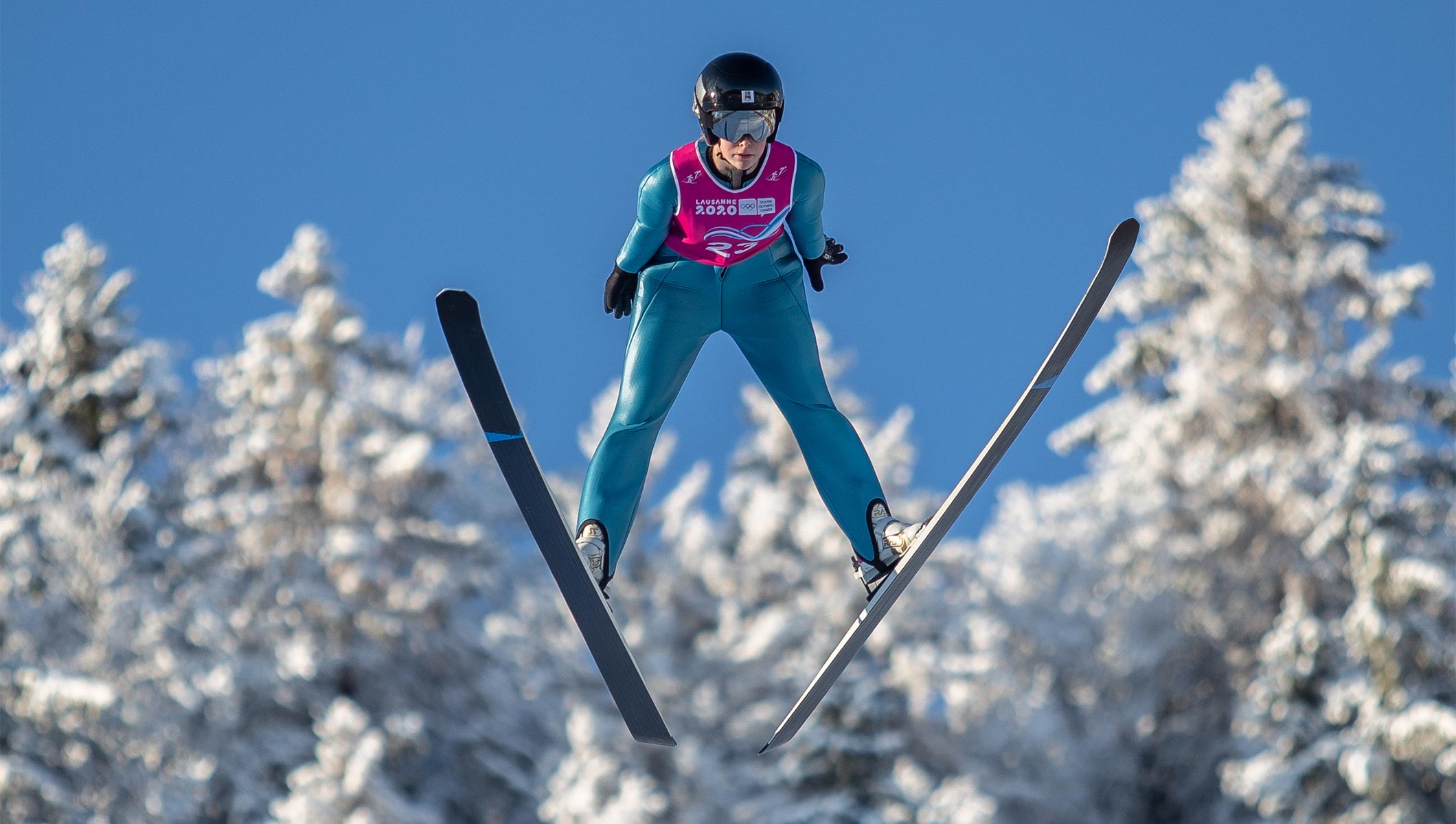
If that sounds a bit hyperbolic, consider this: the last full, uninterrupted ski season in Europe was the winter of 2019/2020. If you were planning a trip in, say, March 2020 and had to cancel, then it’s very possible your last winter holiday was almost a year and half ago.
Now bear in mind you might not go again till February or March 2022 – that’s a three year hiatus.
Worst case scenario, granted, but if you’re a recreational skier/snowboarder, by the time you head back into the mountains, you’ll have been a long time absent.
If that sounds a bit hyperbolic, consider this: the last full, uninterrupted ski season in Europe was the winter of 2019/2020. If you were planning a trip in, say, March 2020 and had to cancel, then it’s very possible your last winter holiday was almost a year and half ago.
Now bear in mind you might not go again till February or March 2022 – that’s a three year hiatus.
Worst case scenario, granted, but if you’re a recreational skier/snowboarder, by the time you head back into the mountains, you’ll have been a long time absent.
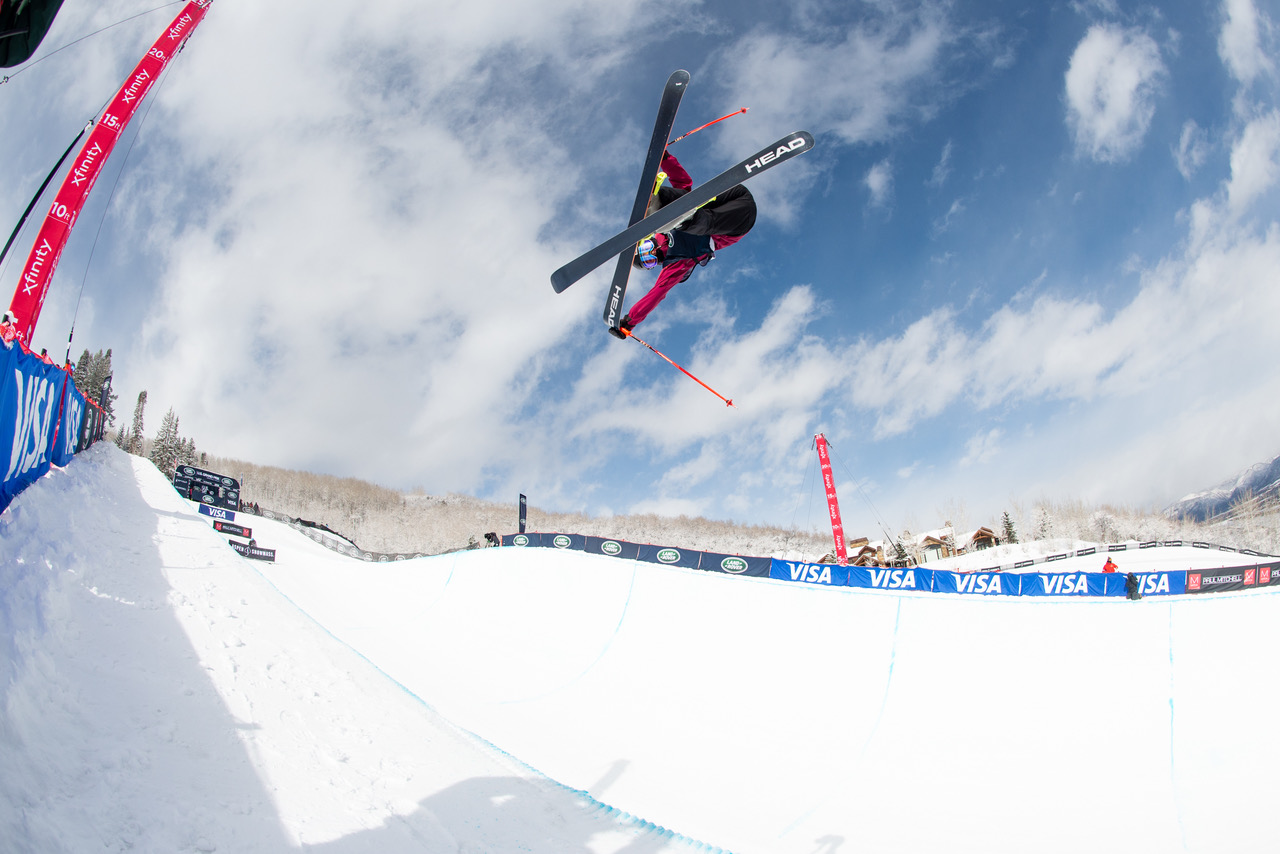
Before you see if those salopettes still fit, let’s dive into some injury stats.
As recreational skiers and snowboarders, depending on where in the world we get our winter kicks, the odds say that we’ll injure ourselves 3-5 times every thousand days on the slopes.
Well that doesn’t sound too perilous. Let’s face it, there’s an acceptable risk to every activity and 5/1000 sounds pretty manageable. But drill down the figures and we get to something a little more attention-grabbing:
Going by those odds (and take them with a pinch of salt because they vary from year to year and place to place) you have a 0.5% chance of sustaining an injury every time you head out of the locker in the morning. Go for a week’s holiday and you’ve scored a slightly more thought-provoking 3.5%. Go every year for ten years and you’re looking at 35% – or a 1 in 3 statistical probability of injuring yourself. And that’s across the board, whether you’re a nursery-slope beginner or a seasoned powder junkie. Ask any professional winter athlete for a catalogue of their injuries and it’ll make you wince every time. Even the young ones. As for the old-hands: alpine ski legend Julia Mancuso is a former guest here. By the end of that stellar career, her body was barely holding itself together.
The point is this: beginners and experts alike generally operate around the limits of their abilities, and often a little beyond.
But on top of that we’ve got a new problem. With such a gap between the last time on the slope and the next one, those boundaries are likely to have shifted a little. What you think you can do – in fact what you took in your stride last time you were on the mountain – might be more of a stretch now. Your body might not be up to what it was from a muscular or aerobic perspective. Sure, we can mitigate the shock to the system by not tearing around off-piste on day one, and leaving some of the loftier park tricks in the locker till later in the week. But what about those joints and sinews?
My body (which was 42 last time I went and will be 44 next time) hasn’t had to twist and bend in the mountain way for a long time. Whatever age you are, when the winter season hits, it’s going to hit hard. Your bones and your muscles are unprepared and they don’t like that.
With that in mind, it’s important to hone your body now more than ever before. So while previous off-seasons might have included squats and wall-sits, a bit of cardio to prepare your lungs for the thin air and maybe some stretching to keep those sinews supple, this time you’re going to have to do a bit more prep.
Okay first of all a disclaimer: none of the following advice is of a professional medical nature. Everybody’s different, every body is different. No one’s invincible on the slopes and no matter what shape you’re in, there’s an inherent risk of injury when you surrender yourself to the combined perils of gravity and a lack of friction. This is what others do to minimise their own risks – and prolong their careers.
I’m not a doctor or medically qualified in any way. Neither are my winter athlete friends actually. But they are at the elite level of winter sports, so their opinions and fitness regimes are important. The way I see it, if I do something that vaguely resembles what they do, then it should stand up to my much more recreational-level skiing and snowboarding.
In fact Team GB’s first ever female Nordic Combined athlete, Mani Cooper, is quick to give me perspective.
“Taking off at over 90kmh,” she explains, “and landing at 110kmh is a big deal, and if you crash it’s never good.”
Yes, this 18 year-old daredevil literally flies through the air. Just as I’m starting to wonder if there’s any relevance to her sport and mine, Mani is back down to earth and on a level more aligned to my skill spectrum.
“But, in my sport, the little minor injuries from over doing it in training are more common – that extra interval you shouldn’t have done, that extra gym session where you pushed too far. These can be really annoying and set you back. If you miss a training session through injury it feels like you are really going backwards.”
Before you see if those salopettes still fit, let’s dive into some injury stats.
As recreational skiers and snowboarders, depending on where in the world we get our winter kicks, the odds say that we’ll injure ourselves 3-5 times every thousand days on the slopes.
Well that doesn’t sound too perilous. Let’s face it, there’s an acceptable risk to every activity and 5/1000 sounds pretty manageable. But drill down the figures and we get to something a little more attention-grabbing:
Going by those odds (and take them with a pinch of salt because they vary from year to year and place to place) you have a 0.5% chance of sustaining an injury every time you head out of the locker in the morning. Go for a week’s holiday and you’ve scored a slightly more thought-provoking 3.5%. Go every year for ten years and you’re looking at 35% – or a 1 in 3 statistical probability of injuring yourself. And that’s across the board, whether you’re a nursery-slope beginner or a seasoned powder junkie. Ask any professional winter athlete for a catalogue of their injuries and it’ll make you wince every time. Even the young ones. As for the old-hands: alpine ski legend Julia Mancuso is a former guest here. By the end of that stellar career, her body was barely holding itself together.
The point is this: beginners and experts alike generally operate around the limits of their abilities, and often a little beyond.
But on top of that we’ve got a new problem. With such a gap between the last time on the slope and the next one, those boundaries are likely to have shifted a little. What you think you can do – in fact what you took in your stride last time you were on the mountain – might be more of a stretch now. Your body might not be up to what it was from a muscular or aerobic perspective. Sure, we can mitigate the shock to the system by not tearing around off-piste on day one, and leaving some of the loftier park tricks in the locker till later in the week. But what about those joints and sinews?
My body (which was 42 last time I went and will be 44 next time) hasn’t had to twist and bend in the mountain way for a long time. Whatever age you are, when the winter season hits, it’s going to hit hard. Your bones and your muscles are unprepared and they don’t like that.
With that in mind, it’s important to hone your body now more than ever before. So while previous off-seasons might have included squats and wall-sits, a bit of cardio to prepare your lungs for the thin air and maybe some stretching to keep those sinews supple, this time you’re going to have to do a bit more prep.
Okay first of all a disclaimer: none of the following advice is of a professional medical nature. Everybody’s different, every body is different. No one’s invincible on the slopes and no matter what shape you’re in, there’s an inherent risk of injury when you surrender yourself to the combined perils of gravity and a lack of friction. This is what others do to minimise their own risks – and prolong their careers.
I’m not a doctor or medically qualified in any way. Neither are my winter athlete friends actually. But they are at the elite level of winter sports, so their opinions and fitness regimes are important. The way I see it, if I do something that vaguely resembles what they do, then it should stand up to my much more recreational-level skiing and snowboarding.
In fact Team GB’s first ever female Nordic Combined athlete, Mani Cooper, is quick to give me perspective.
“Taking off at over 90kmh,” she explains, “and landing at 110kmh is a big deal, and if you crash it’s never good.”
Yes, this 18 year-old daredevil literally flies through the air. Just as I’m starting to wonder if there’s any relevance to her sport and mine, Mani is back down to earth and on a level more aligned to my skill spectrum.
“But, in my sport, the little minor injuries from over doing it in training are more common – that extra interval you shouldn’t have done, that extra gym session where you pushed too far. These can be really annoying and set you back. If you miss a training session through injury it feels like you are really going backwards.”

Like Mani, Freestyle skier Zoe Atkin operates at a different level to most of us. Watching her nail a seemingly flawless run in the halfpipe at Aspen earlier this year to claim World Championship bronze, there’s a clear distinction between her skiing and mine. But that archetypal knee injury feared by skiers of all ages and abilities is a threat common to both of us.
“Injuries are definitely very common in freestyle skiing, especially in halfpipe skiing where you can fall 22+ feet to straight ice. Knee injuries are very common for skiers because of the way our knees can twist when we fall, so I would say an ACL tear is the most common injury in freestyle skiing.”
Double Olympic Snowboard Cross champion Pierre Vaultier plies his trade on one plank, but whether soaring through the air on skis on racing flat out on a snowboard, there’s a recurring theme:
“Knees are most likely to get injured in SBX,” he tells me (and I swear mine are starting to twinge as we speak). “Concussions are very frequent,” he adds. “But they only require rest for healing. As we get older, back pains are frequent too at the end of the season.”
At 33 Pierre is only ten years my junior, unlike Mani and Zoe who at 18 probably still bounce a lot better than I do. But age isn’t the only factor at play here. What counts is time away from the snow, and that’s something we’ve all experienced lately, young and old alike.
So what can we do about it? After all we haven’t just had to contend with time off – there’s been a lack of accessible gym facilities during the last year and a half too.
That might not have been a problem for Zoe Atkin, but it’s one she can relate.
“Luckily for me,” Zoe says, “my gym has stayed open throughout the pandemic so I have been able to continue my strength training, but many of my skiing friends have been doing more body weight exercises at home, or even carrying gallons of water to add weight to their normal exercises.”
Like Mani, Freestyle skier Zoe Atkin operates at a different level to most of us. Watching her nail a seemingly flawless run in the halfpipe at Aspen earlier this year to claim World Championship bronze, there’s a clear distinction between her skiing and mine. But that archetypal knee injury feared by skiers of all ages and abilities is a threat common to both of us.
“Injuries are definitely very common in freestyle skiing, especially in halfpipe skiing where you can fall 22+ feet to straight ice. Knee injuries are very common for skiers because of the way our knees can twist when we fall, so I would say an ACL tear is the most common injury in freestyle skiing.”
Double Olympic Snowboard Cross champion Pierre Vaultier plies his trade on one plank, but whether soaring through the air on skis on racing flat out on a snowboard, there’s a recurring theme:
“Knees are most likely to get injured in SBX,” he tells me (and I swear mine are starting to twinge as we speak). “Concussions are very frequent,” he adds. “But they only require rest for healing. As we get older, back pains are frequent too at the end of the season.”
At 33 Pierre is only ten years my junior, unlike Mani and Zoe who at 18 probably still bounce a lot better than I do. But age isn’t the only factor at play here. What counts is time away from the snow, and that’s something we’ve all experienced lately, young and old alike.
So what can we do about it? After all we haven’t just had to contend with time off – there’s been a lack of accessible gym facilities during the last year and a half too.
That might not have been a problem for Zoe Atkin, but it’s one she can relate.
“Luckily for me,” Zoe says, “my gym has stayed open throughout the pandemic so I have been able to continue my strength training, but many of my skiing friends have been doing more body weight exercises at home, or even carrying gallons of water to add weight to their normal exercises.”
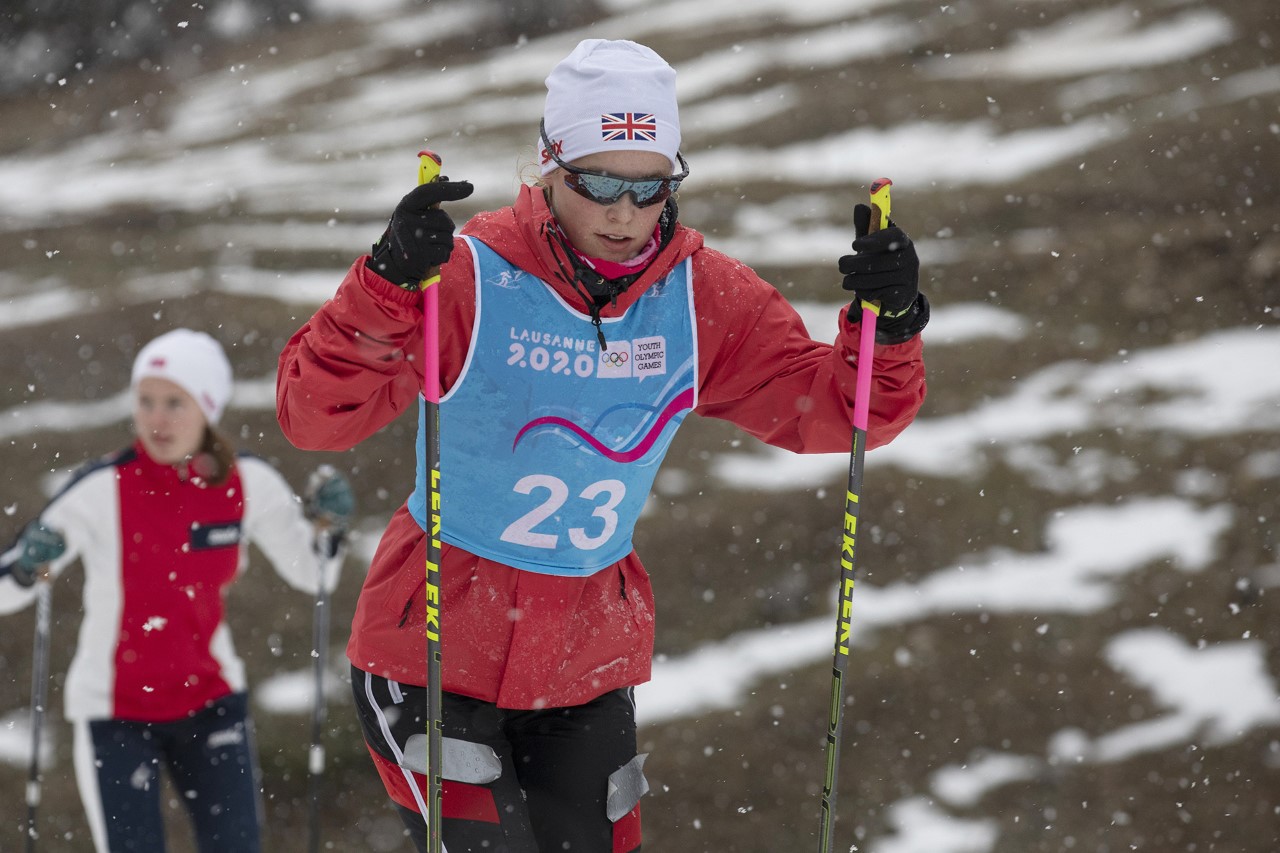
Customising your routine might not feel necessary now that we’re starting to open up, but at a perilous time that could see gym doors closing again, even temporarily, and for those who have learned to love the great indoors, Zoe’s observations are encouraging. The fact is, we don’t know what’s next on the Covid menu. We might yet need to tailor our routines to include more ski fitness exercises at home.
It’s a concept Pierre Vaultier understands well.
“Lockdown definitely involved schedule adjustment. It’s always harder to give intensity elsewhere than the gym. I readapted my training to body weight exercises, or with simple accessories. I re-scheduled to more frequent sessions with less intensity.”
Perhaps it’s the athlete’s mentality, but Mani too has found opportunity over the last year and more – she’s sought the advantages where others might have seen setbacks.
“Yes, I’ve been able to keep in shape and even improve in some areas,” she says. “Living near the mountains I have been very lucky with the resources at home and what I have around me, but everyone has facilities on the doorstep. Maybe a lit run route, some outdoor steps or an underpass with a good incline – you just need to be a bit creative. My sister has been playing a big role in my training. We push each other over our limits, have fun sessions together from our core training up to our bike tours we do – so if you can find a partner that motivates you it can be a real plus.”
Observation 1: whatever limitations Covid brings over the coming months, it’s possible to maintain – and exceed – your current fitness levels.
While that’s encouraging, it doesn’t negate the reality that most of us have spent a long time off the slopes. If you’ve stayed in shape over the last year and a half, you’re in a good place. But what can you do to physically prepare yourself after such a lengthy interval?
“Build a solid cardio base now,” Pierre says. “Start working on specific muscle groups from the summer on.” And specifically to you snowboarders: “Get on any kind of board the moves as you have the opportunity: surfing, skateboarding, pumptrack and others, skimboarding, DIYboarding!”
Customising your routine might not feel necessary now that we’re starting to open up, but at a perilous time that could see gym doors closing again, even temporarily, and for those who have learned to love the great indoors, Zoe’s observations are encouraging. The fact is, we don’t know what’s next on the Covid menu. We might yet need to tailor our routines to include more ski fitness exercises at home.
It’s a concept Pierre Vaultier understands well.
“Lockdown definitely involved schedule adjustment. It’s always harder to give intensity elsewhere than the gym. I readapted my training to body weight exercises, or with simple accessories. I re-scheduled to more frequent sessions with less intensity.”
Perhaps it’s the athlete’s mentality, but Mani too has found opportunity over the last year and more – she’s sought the advantages where others might have seen setbacks.
“Yes, I’ve been able to keep in shape and even improve in some areas,” she says. “Living near the mountains I have been very lucky with the resources at home and what I have around me, but everyone has facilities on the doorstep. Maybe a lit run route, some outdoor steps or an underpass with a good incline – you just need to be a bit creative. My sister has been playing a big role in my training. We push each other over our limits, have fun sessions together from our core training up to our bike tours we do – so if you can find a partner that motivates you it can be a real plus.”
Observation 1: whatever limitations Covid brings over the coming months, it’s possible to maintain – and exceed – your current fitness levels.
While that’s encouraging, it doesn’t negate the reality that most of us have spent a long time off the slopes. If you’ve stayed in shape over the last year and a half, you’re in a good place. But what can you do to physically prepare yourself after such a lengthy interval?
“Build a solid cardio base now,” Pierre says. “Start working on specific muscle groups from the summer on.” And specifically to you snowboarders: “Get on any kind of board the moves as you have the opportunity: surfing, skateboarding, pumptrack and others, skimboarding, DIYboarding!”

As a Nordic Combiner, Mani Cooper is either exploding from the end of a ramp and soaring through the air, or else grinding away on lung-busting cross country races. She knows a thing or two about cardio, but also the importance of a fully comprehensive ski fitness training schedule.
“With Alpine skiing many people concentrate on building leg muscles – running up and down stairs – but doing additional every-day stretching, to keep all your muscles loose – and consider the whole body and core stability (stomach, back etc.) – will definitely help not only for your upcoming season but for your day-to-day life. Doing this you will minimise the chance of pulling a muscle or injuring yourself. Also some basic endurance, maybe even long walks/slow jogging can help keep tiredness at bay as many injuries are done when you are feeling tired at the end of the day.”
Think about that for a second: do you find yourself taking more spills at the end of your day? It makes sense to build endurance so that you’re able to push through and finish strongly.
That stretching component is an important one too, whatever kind of skiing or snowboarding you do. It’s an element Zoe puts a lot of stock in.
“I would say to prepare yourself for your next skiing trip, start stretching! I think stretching is very underrated and it can help prevent so many injuries and even just make my body feel so much better. In addition to that, continue your strength training and going to the gym to focus on legs/core because after skiing for the first time after 2 years off your legs will likely be very sore!”
Observation 2: work on your cardio, work on your flexibility. You’ll feel less tired as the day progresses, and your muscles will expand rather than tear.
It’s obvious the pandemic is a long way from over. There’s optimism surrounding the vaccination programme of course. But with so many of the world’s poorer countries yet to have access to more than a fraction of the doses they need, there’s still a way to go. For winter sport lovers (first world problem, I know) the return to the mountains is likely to be a tricky one.
It’s not just about whether we’re allowed to travel when the time comes, but what the preceding months will look like. What if you can’t get to a gym? What if you have to isolate at home for long periods? As I write this the delta variant is starting to look like it might put a crimp in the infamous road map. On top of that, if someone in your circle contracts Covid, you’re going to have to isolate at home for a while, with only occasional stints outside. How does that impact your ski fitness training?
“That’s a tough question,” Zoe says. “I would say if I was in lockdown with no equipment and wanted to keep my legs in shape for skiing, I would do pistol squats – squatting down on one leg until your calf meets your hamstring with the other leg lifted straight out in front of you. I would also try to add weight to them by carrying a big water bottle or heavy book.”
Pierre echoes her focus on leg work:
“Full snatch if I have a weightlifting bar. Otherwise pistol squats!”
“This is a horrible thought,” Mani says when I tell her she can only do one exercise to stay fit. “But for me as a Nordic Combined athlete it’s crucial to keep the endurance and the dynamics for jumping up. So I would probably be on my rollers – indoor trainer – at home on my bike, and doing my jumping program (jumping/sprinting up and down steps) – whoops is that two exercises, hopefully nobody’s looking!”
As a Nordic Combiner, Mani Cooper is either exploding from the end of a ramp and soaring through the air, or else grinding away on lung-busting cross country races. She knows a thing or two about cardio, but also the importance of a fully comprehensive ski fitness training schedule.
“With Alpine skiing many people concentrate on building leg muscles – running up and down stairs – but doing additional every-day stretching, to keep all your muscles loose – and consider the whole body and core stability (stomach, back etc.) – will definitely help not only for your upcoming season but for your day-to-day life. Doing this you will minimise the chance of pulling a muscle or injuring yourself. Also some basic endurance, maybe even long walks/slow jogging can help keep tiredness at bay as many injuries are done when you are feeling tired at the end of the day.”
Think about that for a second: do you find yourself taking more spills at the end of your day? It makes sense to build endurance so that you’re able to push through and finish strongly.
That stretching component is an important one too, whatever kind of skiing or snowboarding you do. It’s an element Zoe puts a lot of stock in.
“I would say to prepare yourself for your next skiing trip, start stretching! I think stretching is very underrated and it can help prevent so many injuries and even just make my body feel so much better. In addition to that, continue your strength training and going to the gym to focus on legs/core because after skiing for the first time after 2 years off your legs will likely be very sore!”
Observation 2: work on your cardio, work on your flexibility. You’ll feel less tired as the day progresses, and your muscles will expand rather than tear.
It’s obvious the pandemic is a long way from over. There’s optimism surrounding the vaccination programme of course. But with so many of the world’s poorer countries yet to have access to more than a fraction of the doses they need, there’s still a way to go. For winter sport lovers (first world problem, I know) the return to the mountains is likely to be a tricky one.
It’s not just about whether we’re allowed to travel when the time comes, but what the preceding months will look like. What if you can’t get to a gym? What if you have to isolate at home for long periods? As I write this the delta variant is starting to look like it might put a crimp in the infamous road map. On top of that, if someone in your circle contracts Covid, you’re going to have to isolate at home for a while, with only occasional stints outside. How does that impact your ski fitness training?
“That’s a tough question,” Zoe says. “I would say if I was in lockdown with no equipment and wanted to keep my legs in shape for skiing, I would do pistol squats – squatting down on one leg until your calf meets your hamstring with the other leg lifted straight out in front of you. I would also try to add weight to them by carrying a big water bottle or heavy book.”
Pierre echoes her focus on leg work:
“Full snatch if I have a weightlifting bar. Otherwise pistol squats!”
“This is a horrible thought,” Mani says when I tell her she can only do one exercise to stay fit. “But for me as a Nordic Combined athlete it’s crucial to keep the endurance and the dynamics for jumping up. So I would probably be on my rollers – indoor trainer – at home on my bike, and doing my jumping program (jumping/sprinting up and down steps) – whoops is that two exercises, hopefully nobody’s looking!”
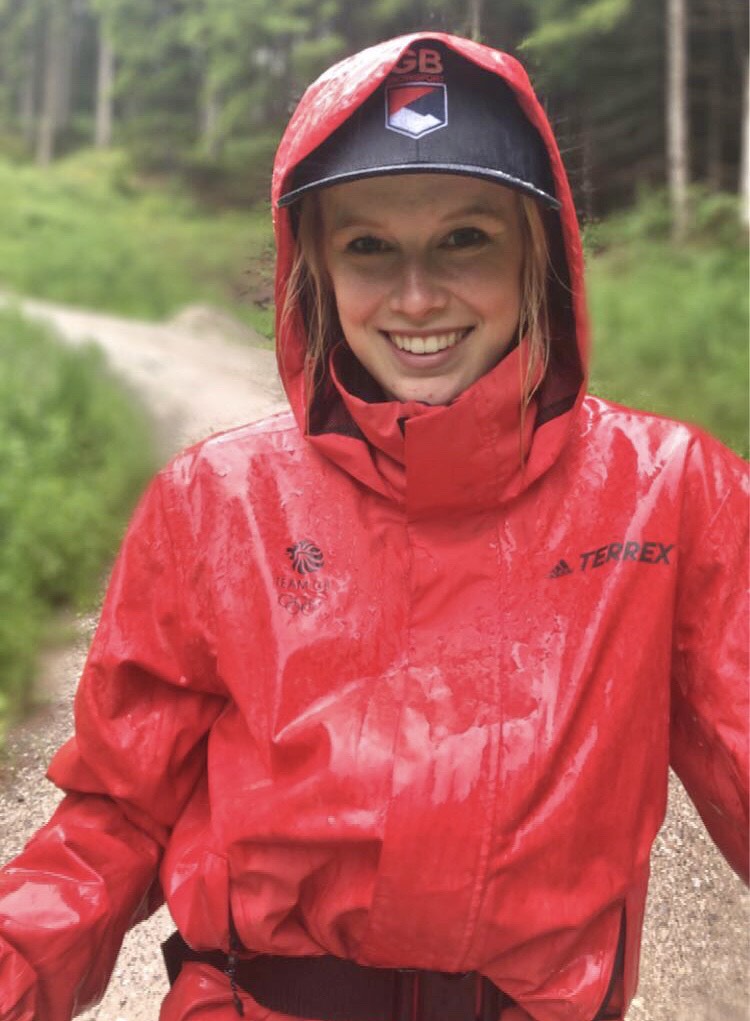
Luckily most of us don’t have to contend with the combined elements of jumping and cross country skiing. Staying snow-fit during a longer-than-usual lay off is perfectly achievable. There are ski fitness exercises you can do at home. And you can build a ski fitness programme that fits into your surrounding area.
The key is to start early (yes, now) and build up in a smooth arc until you’ve moulded your body into something as strong and supple as you can get it. If you’re anything like me, you’re probably used to staying relatively fit all year and then making a last-minute dash towards peak fitness two weeks before departure. Clearly this is a poor strategy, but now, in the current climate and with such a long lay-off, it’s one fraught with risk.
If you’ve been paying attention you’ll know which part of your anatomy is most likely to go snap: the knees. (Actually for snowboarders the wrist takes the most punishment, statistically, but across the winter spectrum the knees are far out ahead). For you guys on two planks, it’s worth noting that almost 40% of all injuries are to the knees.
In other words, you need to look after them. You might fear wiping out and landing on your wrist or shoulder, but the knees are constantly absorbing pressure, ever-twisting. Just by getting down the slope, you’re putting them under strain. So keep them strong, keep them supple.
The road out of Covid is long and beset with pitfalls, but the point is this: with the right approach, when you finally stamp into that binding (how good is that going to feel?) you don’t want to be afraid of it.
Observation three: prepare your body with appropriate ski fitness training and it’ll be ready for you. Don’t give it the shock of its life. That’s when your joints and tendons do the Rice Krispies thing: snap, crackle and pop.
Injury stats are roughly consistent over the past several years with an apex here and there. But next season, fuelled by an intoxicating combination of excitement and lack of recent snow action, might be one of the peaks. Be ready for your return – don’t have one of the 3-5 in 1000 injury days.
Luckily most of us don’t have to contend with the combined elements of jumping and cross country skiing. Staying snow-fit during a longer-than-usual lay off is perfectly achievable. There are ski fitness exercises you can do at home. And you can build a ski fitness programme that fits into your surrounding area.
The key is to start early (yes, now) and build up in a smooth arc until you’ve moulded your body into something as strong and supple as you can get it. If you’re anything like me, you’re probably used to staying relatively fit all year and then making a last-minute dash towards peak fitness two weeks before departure. Clearly this is a poor strategy, but now, in the current climate and with such a long lay-off, it’s one fraught with risk.
If you’ve been paying attention you’ll know which part of your anatomy is most likely to go snap: the knees. (Actually for snowboarders the wrist takes the most punishment, statistically, but across the winter spectrum the knees are far out ahead). For you guys on two planks, it’s worth noting that almost 40% of all injuries are to the knees.
In other words, you need to look after them. You might fear wiping out and landing on your wrist or shoulder, but the knees are constantly absorbing pressure, ever-twisting. Just by getting down the slope, you’re putting them under strain. So keep them strong, keep them supple.
The road out of Covid is long and beset with pitfalls, but the point is this: with the right approach, when you finally stamp into that binding (how good is that going to feel?) you don’t want to be afraid of it.
Observation three: prepare your body with appropriate ski fitness training and it’ll be ready for you. Don’t give it the shock of its life. That’s when your joints and tendons do the Rice Krispies thing: snap, crackle and pop.
Injury stats are roughly consistent over the past several years with an apex here and there. But next season, fuelled by an intoxicating combination of excitement and lack of recent snow action, might be one of the peaks. Be ready for your return – don’t have one of the 3-5 in 1000 injury days.
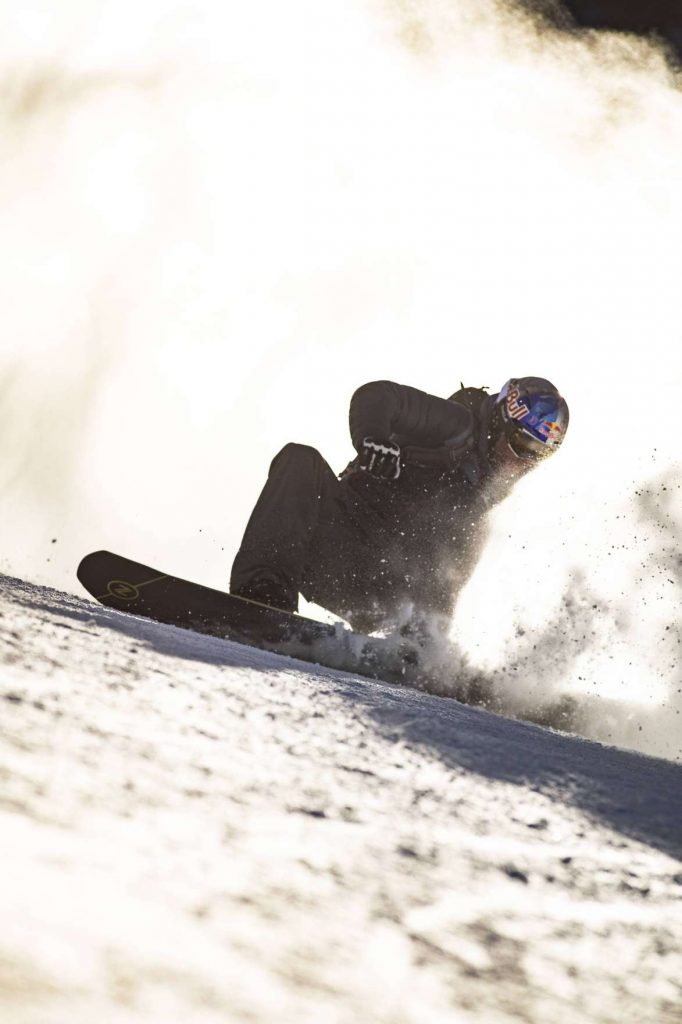
My grateful thanks for the input of Zoe Atkin, Mani Cooper and Pierre Vaultier. You can keep up with their lives on and off the snow at the following:
Mani Cooper Instagram: @mani.cooper
Zoe Atkin Instagram: @zoeaatkin
Pierre Vaultier Instagram: @pierrevaultier
Related article: Stepping Out of Bounds with Torah Bright
